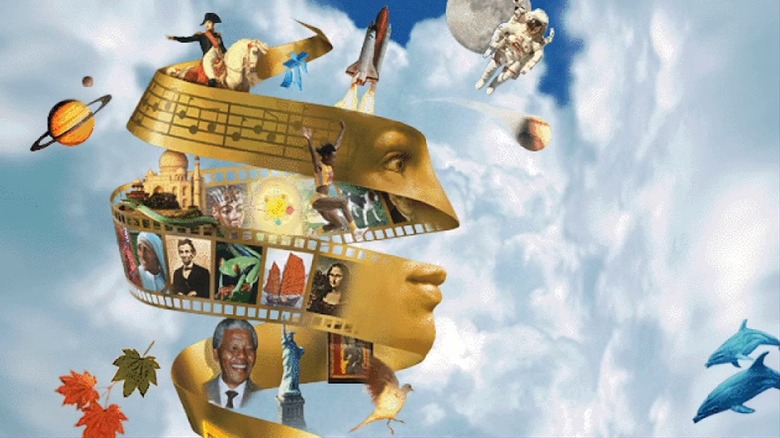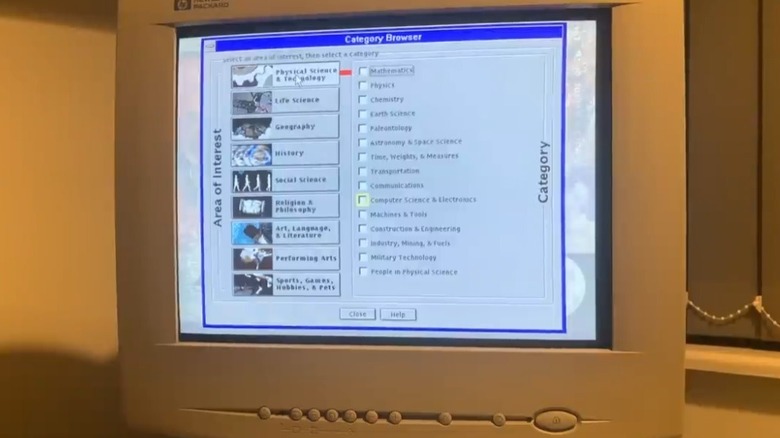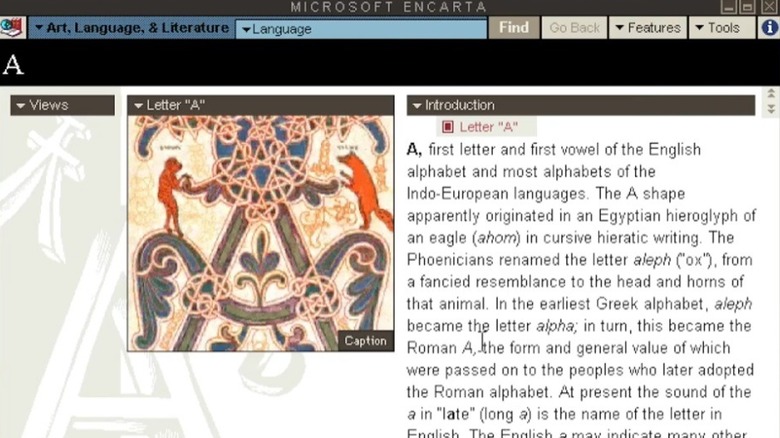What Happened To Encarta? Why Microsoft Discontinued The Encyclopedia Software
Microsoft first launched Encarta in 1993, but the idea for the digitized encyclopedia software was initially conceived in 1985. Before the Internet allowed you to instantaneously look up every random or important fact you ever needed, the only way to get information about something was either to ask your parents — hoping they knew the correct answer — or to trot down to the local library to do the research manually. However, if you were lucky enough, you might have had your very own set of encyclopedias brimming with info ranging from apples to zebras. It was a dark time, to be sure.
Still, hefty tomes had an inherent problem — they were rarely up-to-date. One simply couldn't refresh whole books on the fly just to change a few things inside a particular volume. Updating printed material was simply too costly, too time-consuming, and too impractical. The publishing date acted as a good warning, surreptitiously letting readers know how obsolete the information inside was. Microsoft saw an opportunity that created a solution to outdated printed encyclopedias, so in 1985, it began working on a digital version that would eventually be called Encarta.
However, just as Encyclopædia Britannica would eventually stop publishing physical books, Microsoft soon realize that the public had little appetite for an encyclopedia that arrived on CD-ROMs. Here's why Microsoft discontinued Encarta.
Encarta was a good, albeit short-lived idea
Microsoft approached several reference publishers, but they all turned the software company down, likely because they saw Microsoft as a threat to their very way of existence. After all, if you put encyclopedias on a compact disk, you didn't need dozens of books on your shelf.
Realizing computers were the wave of the future, publisher Funk & Wagnalls signed a contract in 1989 that allowed Microsoft to use their New Encyclopedia containing 29 volumes worth of information to create Encarta's primary database. The first red flag popped up in 1990 when Microsoft put the whole project on hold because it internally started debating whether Encarta was a commercially viable product. The project resumed in '91, compiling 25,000 articles replete with sound files, maps, videos, and over 5,000 images pulled from the public domain.
The initial version of Encarta, released in 1993, cost almost $400 and contained a dictionary, thesaurus, historical timeline, and quiz game. Roughly 40% of the articles on the program consisted of biographies. However, sales were lackluster. By the end of the year, it was included free with brand-new Windows-based computers. It could be purchased as a stand-alone program for $99, a price point that would continue to drop as other versions were made available, including an online version (for subscribers to the Microsoft Network ISP), standard and deluxe editions (with monthly updates), and a bundled reference suite edition.
Still, with the impending launch of Windows 95 (which was a huge deal), Microsoft thought it could make Encarta work.
The Internet killed the digital encyclopedia star
As Microsoft continued to grow over the '90s and 2000s, it kept trying to make Encarta viable, going so far as to buy out Collier's electronic encyclopedia and the New Merit Scholar's Encyclopedia and folding their data into the program. It tried a website-based subscription service and a Black history encyclopedia called Encarta Africana. In 2000, a free abridged version was released. Then, in 2001 (January 15 to be exact), the open-source, free online encyclopedia called Wikipedia went live.
Encarta floundered as the World Wide Web grew exponentially. In 2006, Microsoft turned over its maintenance to a subsidiary of Websters International Publishers Ltd. In January 2009, The New York Times reported that Wikipedia received 97% of the web traffic to online encyclopedias, while Encarta got a paltry 1.27%.
The writing was on the wall, and in March of '09, MSN Encarta announced they were discontinuing Encarta because "the category of traditional encyclopedias and reference material has changed" and "people today seek and consume information in considerably different ways than in years past." Much in the same way Microsoft tried using technology to make printed encyclopedias obsolete, technology eventually made Encarta obsolete.
By the end of 2009, only the free online version of Encarta's dictionary (containing over 60,000 articles) was still kicking. As a frame of reference, Wikipedia's first year saw approximately 20,000 articles entered (in 18 languages). Just five years later, that number had grown to over one million. As of January 2024, Wikipedia has almost seven million articles in more than 300 languages.


